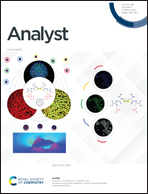Instant detection of extended-spectrum β-lactamase-producing bacteria from the urine of patients using infrared spectroscopy combined with machine learning
Abstract
Antibiotics are considered the most effective treatment against bacterial infections. However, most bacteria have already developed resistance to a broad spectrum of commonly used antibiotics, mainly due to their uncontrolled use. Extended-spectrum beta-lactamase (ESBL)-producing bacteria are an essential class of multidrug-resistant (MDR) bacteria. It is of extreme urgency to develop a method that can detect ESBL-producing bacteria rapidly for the effective treatment of patients with bacterial infectious diseases. Fourier transform infrared (FTIR) microscopy is a sensitive method that can rapidly detect cellular molecular changes. In this study, we examined the potential of FTIR spectroscopy-based machine learning algorithms for the rapid detection of ESBL-producing bacteria obtained directly from a patient's urine. Using 591 ESBL-producing and 1658 non-ESBL-producing samples of Escherichia coli (E. coli) and Klebsiella pneumoniae, our results show that the FTIR spectroscopy-based machine learning approach can identify ESBL-producing bacteria within 40 minutes from receiving a patient's urine sample, with a success rate of 80%.



 Please wait while we load your content...
Please wait while we load your content...